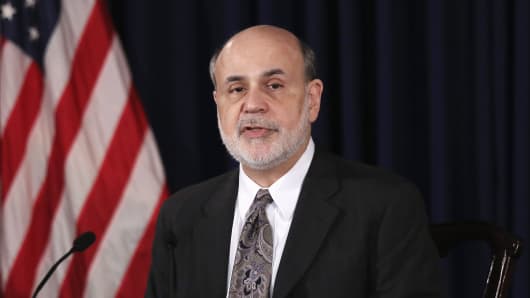Investors have responded favorably to the outcome of today's highly anticipated Federal Reserve policy meeting, and rightly so. Here are four key takeaways that speak to more than this afternoon's impressive market moves; they also shed light on what may be ahead.
First, the Fed is right to be more confident about the short-term outlook for the economy. The labor market is doing better as illustrated by the last employment report; same for household spending and business investment. Also, the amount of artificial fiscal restraint (and related uncertainties) has come down following yesterday's Congressional vote.
(Read more: Live blog: The Fed begins to taper)
Second, the Fed's confidence, while higher in relative terms, is not yet overwhelming. Our central bankers are still concerned (and correctly so) about the overall moderate level of economic activity, as well as the still-elevated unemployment rate. To the extent that inflation is a worry, it is because the rate is too low rather than too high.
Third, this mixed outlook calls for a very delicate policy balance, with the Fed having to walk quite a tight rope in fact. That is why the central bank accompanied its taper announcement (the $10 billion cut in monthly purchase of securities — to $75 billion) with even more dovish language on policy interest rates. This unambiguously signals to investors that policy interest rates will remain low for longer than most previously anticipated.
(Read more: Fed taper a positive sign for economy, bad omen for bonds)
Fourth, the Fed did not use up all of its remaining policy flexibility, low as this already is. For example, the interest it pays banks on excess reserves (IOER) was left unchanged at 0.25 percent.
Investors are right to take all this to mean that the Fed remains highly committed to supporting an improving economy — and, since it seemingly can only do so through "the asset channel," the institution thus remains committed to supporting markets.
(Read more: Here's what's changed in the new Fed statement)
This is particularly good news for equity markets in the short-term, building on what already has been a great performance year. It also contains the disruptions to bonds.
For all this to be sustained beyond the short-term, the Fed needs to succeed in a very tricky economic handoff: From policy-induced growth, fueled by prolonged reliance on experimental measures, to more durable genuine private sector-led growth. And, for this to happen, we need a notable increase in business investment, together with a more holistic policy response out of more agencies in Washington DC.
(Read more: QE: The greatest subsidy to the rich ever?)
— By Mohamed El-Erian
Mohamed El-Erian is the CEO & co-CIO of Pimco. Follow him on Twitter @pimco.




